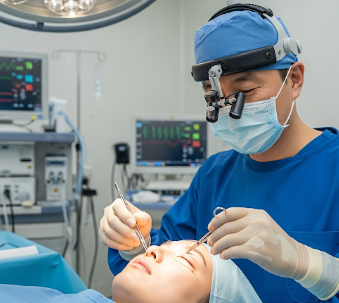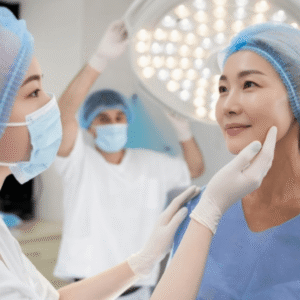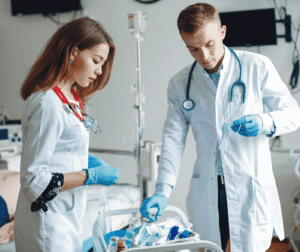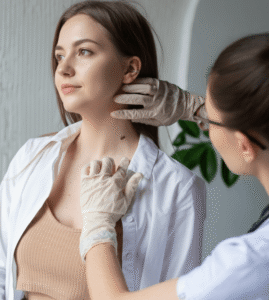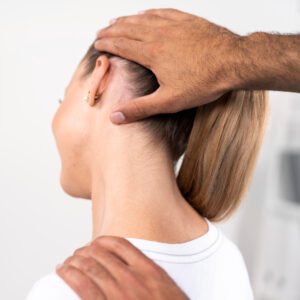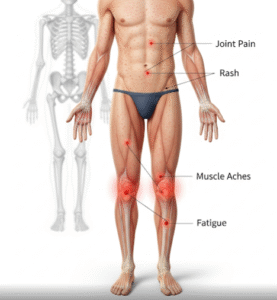Overview
Blepharoplasty, commonly known as eyelid surgery, is a cosmetic or functional procedure that removes excess skin, fat, or muscle from the eyelids to improve vision and enhance appearance. As we age, the eyelid skin stretches, and muscles weaken, leading to droopy eyelids, under-eye bags, and even vision obstruction.
In South Korea, blepharoplasty is one of the most popular and advanced cosmetic procedures, attracting thousands of international patients every year. Korean plastic surgeons are globally recognized for their precision, artistic skills, and minimally invasive techniques. From double eyelid surgery to lower eyelid correction, Korea has become a hub for safe and effective blepharoplasty.
What is Blepharoplasty?
Blepharoplasty is a surgical procedure on the upper or lower eyelids to remove or reposition tissue for functional or aesthetic improvement.
Types of blepharoplasty include:
- Upper blepharoplasty: Removes drooping upper eyelid skin that may affect vision.
- Lower blepharoplasty: Reduces puffiness, bags, or wrinkles under the eyes.
- Double eyelid surgery: Creates a natural-looking crease in the upper eyelid (very popular in Korea).
- Revisional blepharoplasty: Corrects results of previous eyelid surgeries.
The procedure may be cosmetic (for appearance) or functional (to restore vision obstructed by sagging eyelids).
What are the Benefits?
Blepharoplasty offers both functional and cosmetic improvements:
✔ Enhanced appearance with younger, refreshed eyes.
✔ Improved vision if drooping eyelids obstruct sight.
✔ Removal of under-eye bags and puffiness.
✔ Boosted self-confidence and facial harmony.
✔ Quick recovery with minimally invasive Korean techniques.
✔ Long-lasting results when combined with healthy lifestyle and skin care.
Procedure Details
1) How should I prepare for Blepharoplasty?
Preparation for eyelid surgery includes:
- Consultation with a plastic surgeon to discuss goals, medical history, and realistic expectations.
- Pre-surgery tests like vision exam and tear production test.
- Stop blood thinners, smoking, and alcohol at least 1–2 weeks before surgery.
- Arrange post-surgery care, as temporary swelling may affect vision.
In Korea, clinics use digital imaging software to show patients predicted results before the procedure.
2) What happens during the procedure Blepharoplasty?
The surgery usually takes 1–2 hours under local anesthesia with sedation or general anesthesia:
- Upper blepharoplasty: An incision is made along the natural eyelid crease, excess skin and fat are removed, and the incision is closed with fine stitches.
- Lower blepharoplasty: An incision is made just below the lash line or inside the eyelid (transconjunctival), with fat repositioned or removed.
- Double eyelid surgery: A crease is created in the upper eyelid with incisional or non-incisional (suture-only) techniques.
- Korean surgeons often use laser or micro-incision methods for minimal scarring and faster healing.
3) What happens after a Blepharoplasty?
Recovery steps include:
- Cold compresses to reduce swelling and bruising.
- Eye drops and ointments to prevent dryness and infection.
- Stitches removed in 5–7 days (if incisional method used).
- Patients can return to normal activities in 7–10 days, but swelling may take several weeks to fully subside.
- Korean clinics provide post-surgery care packages, including LED light therapy and scar-reducing treatments.
Risks / Benefits
Possible Risks:
- ➤ Temporary swelling, bruising, or dry eyes
- ➤ Infection or bleeding (rare)
- ➤ Visible scarring (minimized with advanced Korean techniques)
- ➤ Difficulty closing eyes fully during healing
- ➤ Asymmetry or need for revision surgery
Major Benefits:
- ✔ Younger, refreshed look
- ✔ Improved peripheral vision in functional cases
- ✔ Minimal downtime with modern methods
- ✔ High satisfaction rates among patients
Recovery and Outlook
Recovery from blepharoplasty is usually fast and predictable:
- Initial swelling and bruising resolve within 1–2 weeks.
- Most patients return to work after 7–10 days.
- Final results are visible after 1–3 months as tissues settle.
- Results typically last 10–15 years, especially with healthy lifestyle habits and skincare.
In South Korea, specialized clinics offer customized recovery programs for international patients, ensuring smooth healing and excellent cosmetic outcomes.
When To Call the Doctor
Patients should seek medical advice if they experience:
- ➤ Severe pain or sudden vision changes
- ➤ Heavy bleeding or discharge from the incision
- ➤ High fever or signs of infection
- ➤ Unusual swelling that worsens instead of improving
- ➤ Difficulty moving the eyelids after the expected recovery period
Best Korea Option / Process
South Korea is one of the world’s leading destinations for cosmetic and functional blepharoplasty. Patients benefit from:
- Top plastic surgeons with years of specialized training.
- Advanced techniques such as laser blepharoplasty, suture-only double eyelid surgery, and scar-minimizing methods.
- Cutting-edge technology including 3D imaging for surgical planning.
- International patient services, including English-speaking staff and concierge care.
- Affordable pricing compared to the US, Europe, or Japan, with uncompromised quality.
Renowned clinics in Seoul’s Gangnam district and major hospitals such as Asan Medical Center and Severance Hospital provide world-class blepharoplasty services, attracting both local and global patients.

